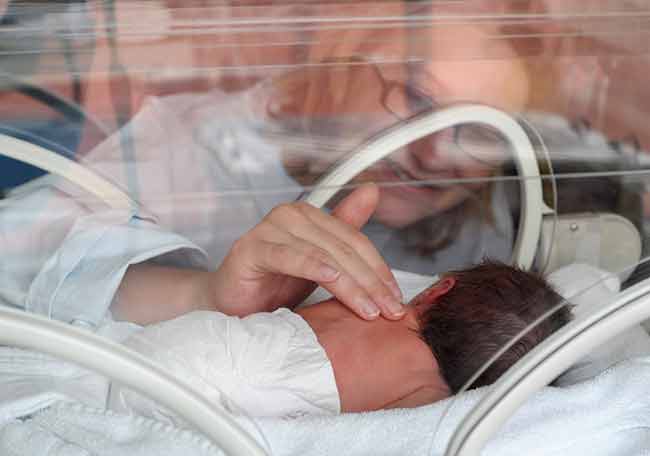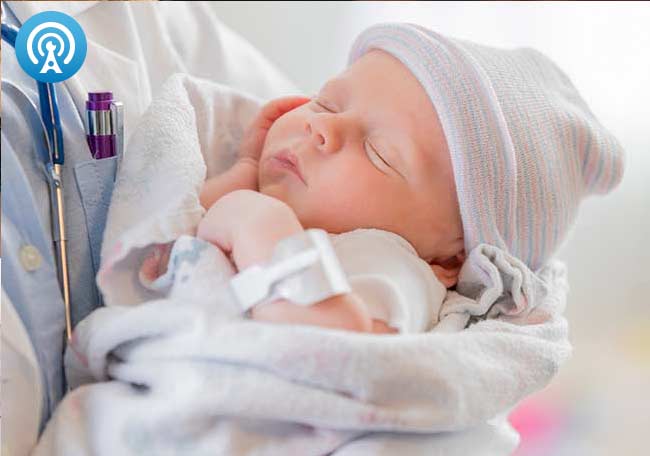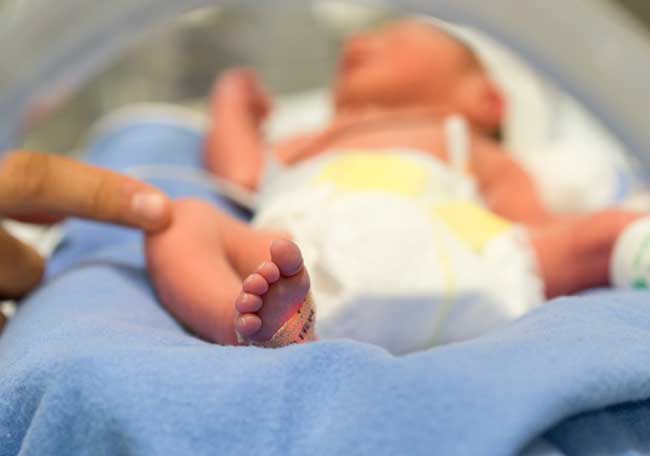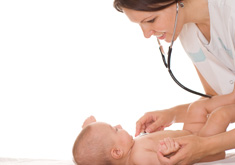Prematurez tardía y desarrollo neurocognitivo a largo plazo

1. Blencowe H, Cousens S, Oestergaard MZ, et al. National, regional, and worldwide estimates of preterm birth rates in the year 2010 with time trends since 1990 for selected countries: a systematic analysis and implications. Lancet. 2012;379(9832): 2162–2172
2. de Jong F, Monuteaux MC, van Elburg RM, Gillman MW, Belfort MB. Systematic review and meta-analysis of preterm birth and later systolic blood pressure. Hypertension. 2012;59(2):226–234
3. Doyle LW, Anderson PJ. Adult outcome of extremely preterm infants. Pediatrics.
2010;126(2):342–351 4. Hack M, Fanaroff AA. Outcomes of children of extremely low birthweight
and gestational age in the 1990s. Semin Neonatol. 2000;5(2):89–106
5. Heinonen K, Eriksson JG, Kajantie E, et al. Late-preterm birth and lifetime socioeconomic attainments: the Helsinki birth cohort study. Pediatrics. 2013; 132(4):647–655
6. Heinonen K, Räikkönen K, Pesonen AK, et al. Behavioural symptoms of attention deficit/hyperactivity disorder in preterm and term children born small and appropriate for gestational age: a longitudinal study. BMC Pediatr. 2010;10:91
7. Hovi P, Andersson S, Eriksson JG, et al. Glucose regulation in young adults with very low birth weight. N Engl J Med. 2007;356(20):2053–2063
8. Kaseva N, Wehkalampi K, Strang-Karlsson S, et al. Lower conditioning leisure-time physical activity in young adults born preterm at very low birth weight. PLoS One. 2012;7(2):e32430
9. Mathiasen R, Hansen BM, Nybo Anderson AM, Greisen G. Socio-economic achievements of individuals born very preterm at the age of 27 to 29 years: a nationwide cohort study. Dev Med Child Neurol. 2009;51(11):901–908
10. Pyhälä R, Lahti J, Heinonen K, et al. Neurocognitive abilities in young adults with very low birth weight. Neurology. 2011;77(23):2052–2060
11. Räikkönen K, Pesonen AK, Heinonen K, et al. Depression in young adults with very low birth weight: the Helsinki study of very low-birth-weight adults. Arch Gen Psychiatry. 2008;65(3):290–296
12. Heinonen K, Pesonen AK, Lahti J, et al. Self- and parent-rated executive functioning in young adults with very low birth weight. Pediatrics. 2013;131(1). Available at: www.pediatrics.org/cgi/
content/full/131/1/e243
13. Committee on Obstetric Practice. ACOG Committee Opinion No. 404 April 2008. Late-preterm infants [published retraction appears in Obstet Gynecol. 2014;123(2 pt 1):371]. Obstet Gynecol. 2008;111(4):1029–1032
14. Engle WA. A recommendation for the definition of “late preterm” (near-term) and the birth weight-gestational age classification system. Semin Perinatol. 2006;30(1):2–7 15. Raju TN, Higgins RD, Stark AR, Leveno KJ. Optimizing care and outcome for late-preterm (near-term) infants: a summary of the workshop sponsored by the National Institute of Child Health and Human Development. Pediatrics. 2006;118(3):1207–1214
16. Baron IS, Litman FR, Ahronovich MD, Baker R. Late preterm birth: a review of medical and neuropsychological childhood outcomes. Neuropsychol Rev. 2012;22(4):438–450
17. Harijan P, Boyle EM. Health outcomes in infancy and childhood of moderate and late preterm infants. Semin Fetal Neonatal Med. 2012;17(3):159–162
18. Teune MJ, Bakhuizen S, Gyamfi Bannerman C, Opmeer BC, van Kaam AH, van Wassenaer AG, et al. A systematic review of severe morbidity in infants born late preterm. Am J Obstet Gynecol. 2011;205(4):374.e1–374.e9 19. Kinney HC. The near-term (late preterm) human brain and risk for periventricular leukomalacia: a review. Semin Perinatol. 2006;30(2):81–88
20. Hüppi PS, Warfield S, Kikinis R, et al. Quantitative magnetic resonance imaging of brain development in premature and mature newborns. Ann Neurol. 1998;43(2):224–235
21. Kugelman A, Colin AA. Late preterm infants: near term but still in a critical developmental time period. Pediatrics. 2013;132(4):741–751 22. Chyi LJ, Lee HC, Hintz SR, Gould JB, Sutcliffe TL. School outcomes of late preterm infants: special needs and challenges for infants born at 32 to 36
weeks gestation. J Pediatr. 2008;153(1): 25–31
23. Moster D, Lie RT, Markestad T. Long-term medical and social consequences of preterm birth. N Engl J Med. 2008;359(3): 262–273
24. Petrini JR, Dias T, McCormick MC, Massolo ML, Green NS, Escobar GJ. Increased risk of adverse neurological development for late preterm infants. J Pediatr. 2009;154(2):169–176
25. Chan E, Quigley MA. School performance at age 7 years in late preterm and early term birth: a cohort study. Arch Dis Child Fetal Neonatal Ed. 2014;99(6):F451–F457
26. Lipkind HS, Slopen ME, Pfeiffer MR, McVeigh KH. School-age outcomes of late preterm infants in New York City. Am J Obstet Gynecol. 2012;206(3):222.e1–222.e6
27. Morse SB, Zheng H, Tang Y, Roth J. Early school-age outcomes of late preterm infants. Pediatrics. 2009;123(4). Available at: www.pediatrics.org/cgi/content/full/123/4/e622
28. van Baar AL, Vermaas J, Knots E, de Kleine MJ, Soons P. Functioning at school age of moderately preterm children born at 32 to 36 weeks’ gestational age. Pediatrics. 2009;124(1):251–257
29. Baron IS, Erickson K, Ahronovich MD, Baker R, Litman FR. Cognitive deficit in preschoolers born late-preterm. Early Hum Dev. 2011;87(2):115–119
30. Baron IS, Erickson K, Ahronovich MD, Coulehan K, Baker R, Litman FR. Visuospatial and verbal fluency relative deficits in ‘complicated’ late-preterm preschool children. Early Hum Dev. 2009; 85(12):751–754
31. Nepomnyaschy L, Hegyi T, Ostfeld BM, Reichman NE. Developmental outcomes of late-preterm infants at 2 and 4 years. Matern Child Health J. 2012;16(8): 1612–1624
32. Poulsen G, Wolke D, Kurinczuk JJ, et al. Gestational age and cognitive ability in early childhood: a population-based cohort study. Paediatr Perinat Epidemiol. 2013;27(4):371–379
33. Quigley MA, Poulsen G, Boyle E, et al. Early term and late preterm birth are associated with poorer school performance at age 5 years: a cohort study. Arch Dis Child Fetal Neonatal Ed. 2012;97(3):F167–F173
34. Talge NM, Holzman C, Wang J, Lucia V, Gardiner J, Breslau N. Late-preterm birth and its association with cognitive and socioemotional outcomes at 6 years of age. Pediatrics. 2010;126(6):
1124–1131
35. Woythaler MA, McCormick MC, Smith VC. Late preterm infants have worse 24-month neurodevelopmental outcomes than term infants. Pediatrics. 2011; 127(3). Available at: www.pediatrics.org/cgi/content/full/127/3/e622
36. Eide MG, Oyen N, Skjaerven R, Bjerkedal T. Associations of birth size, gestational age, and adult size with intellectual performance: evidence from a cohort of Norwegian men. Pediatr Res. 2007;62(5): 636–642
37. Baron IS, Erickson K, Ahronovich MD, Litman FR, Brandt J. Spatial location memory discriminates children born at extremely low birth weight and late preterm at age three. Neuropsychology. 2010;24(6):787–794
38. Gurka MJ, LoCasale-Crouch J, Blackman JA. Long-term cognition, achievement, socioemotional, and behavioral development of healthy late-preterm infants. Arch Pediatr Adolesc Med. 2010; 164(6):525–532
39. Harris MN, Voigt RG, Barbaresi WJ, et al. ADHD and learning disabilities in former late preterm infants: a population-based birth cohort. Pediatrics. 2013;132(3). Available at: www.pediatrics.org/cgi/content/full/132/3/e630
40. Paajanen T, Hänninen T, Tunnard C, et al. CERAD neuropsychological compound scores are accurate in detecting prodromal Alzheimer’s disease: a prospective AddNeuroMed study. J Alzheimers Dis. 2014;39(3):679–690
41. Chandler MJ, Lacritz LH, Hynan LS, et al. A total score for the CERAD neuropsychological battery. Neurology. 2005;65(1):102–106
42. Paajanen T, Hänninen T, Tunnard C, et al; Addneuromed Consortium. CERAD neuropsychological battery total score inmultinational mild cognitive impairment and control populations: the AddNeuroMed study. J Alzheimers Dis. 2010;22(4):1089–1097
43. Deary IJ, Pattie A, Starr JM. The stability of intelligence from age 11 to age 90 years: the Lothian birth cohort of 1921. Psychol Sci. 2013;24(12):2361–2368
44. Bondi MW, Jak AJ, Delano-Wood L, Jacobson MW, Delis DC, Salmon DP. Neuropsychological contributions to the early identification of Alzheimer’s disease. Neuropsychol Rev. 2008;18(1):73–90
45. Rascovsky K, Salmon DP, Ho GJ, et al. Cognitive profiles differ in autopsyconfirmed frontotemporal dementia and AD. Neurology. 2002;58(12):1801–1808 46. Diehl J, Monsch AU, Aebi C, et al. Frontotemporal dementia, semantic dementia, and Alzheimer’s disease: the contribution of standard neuropsychological tests to differential diagnosis. J Geriatr Psychiatry Neurol. 2005;18(1):39–44
47. Borenstein AR, Copenhaver CI, Mortimer JA. Early-life risk factors for Alzheimer disease. Alzheimer Dis Assoc Disord. 2006;20(1):63–72
48. Bhutani VK, Johnson L. Kernicterus in late preterm infants cared for as term healthy infants. Semin Perinatol. 2006; 30(2):89–97
49. Kerstjens JM, Bocca-Tjeertes IF, de Winter AF, Reijneveld SA, Bos AF. Neonatal morbidities and developmental delay in moderately preterm-born children. Pediatrics. 2012;130(2). Available at: www.pediatrics.org/cgi/content/full/130/2/e265
50. Kinnala A, Rikalainen H, Lapinleimu H, Parkkola R, Kormano M, Kero P. Cerebral magnetic resonance imaging and ultrasonography findings after neonatal hypoglycemia. Pediatrics. 1999;103(4 pt 1):724–729
51. Pildes RS, Cornblath M, Warren I, et al. A prospective controlled study of neonatal hypoglycemia. Pediatrics. 1974;54(1): 5–14
52. van der Ree M, Tanis JC, Van Braeckel KN, Bos AF, Roze E. Functional impairments at school age of preterm born children with late-onset sepsis. Early Hum Dev. 2011;87(12):821–826
53. Dietz PM, England LJ, Shapiro-Mendoza CK, Tong VT, Farr SL, Callaghan WM. Infant morbidity and mortality attributable to prenatal smoking in the U.S. Am J Prev Med. 2010;39(1):45–52
54. Khashu M, Narayanan M, Bhargava S, Osiovich H. Perinatal outcomes associated with preterm birth at 33 to 36 weeks’ gestation: a population-based cohort study. Pediatrics. 2009;123(1):109–113
55. Langenveld J, Ravelli AC, van Kaam AH, van der Ham DP, van Pampus MG, Porath M, et al. Neonatal outcome of pregnancies complicated by hypertensive disorders between 34 and 37 weeks of gestation: a 7 year retrospective analysis of a national registry. Am J Obstet Gynecol. 2011;205(6):540.e1–540.e7
56. Shapiro-Mendoza CK, Tomashek KM, Kotelchuck M, et al. Effect of late-preterm birth and maternal medical conditions on newborn morbidity risk. Pediatrics. 2008;121(2). Available at: www.pediatrics. org/cgi/content/full/121/2/e223
57. Heinonen K, Räikkönen K, Pesonen AK, et al. Longitudinal study of smoking cessation before pregnancy and children’s cognitive abilities at 56 months of age. Early Hum Dev. 2011; 87(5):353–359
58. Tuovinen S, Eriksson JG, Kajantie E, Lahti J, Pesonen AK, Heinonen K, et al. Maternal hypertensive disorders in pregnancy and self-reported cognitive impairment of the offspring 70 years later: the Helsinki Birth Cohort Study. Am J Obstet Gynecol. 2013; 208(3):200.e1–200.e9
59. Tuovinen S, Räikkönen K, Kajantie E, et al. Hypertensive disorders in pregnancy and cognitive decline in the offspring up to old age. Neurology. 2012;79(15): 1578–1582
60. Kugelman A, Bader D, Lerner-Geva L, et al. Poor outcomes at discharge among extremely premature infants: a national population-based study. Arch Pediatr Adolesc Med. 2012;166(6):543–550
61. Parviainen S. On ways to reduce mortality of preterm infants [in Finnish]. Duodecim. 1941;57(8):593–602
62. Salmi T. On the significance of pediatric wards in reducing neonatal mortality [in Finnish]. Duodecim. 1944;60(12): 587–592
63. Lenkkeri K, Heloma A, Hakkarainen P. Enslaved by tobacco: A sociohistorical analysis of ex-mokers’ views on giving up smoking in the 1950s [in Finnish].
Yhteiskuntapolitiikka. 2013;78(2): 169–180
Comentarios
Para ver los comentarios de sus colegas o para expresar su opinión debe ingresar con su cuenta de IntraMed.











